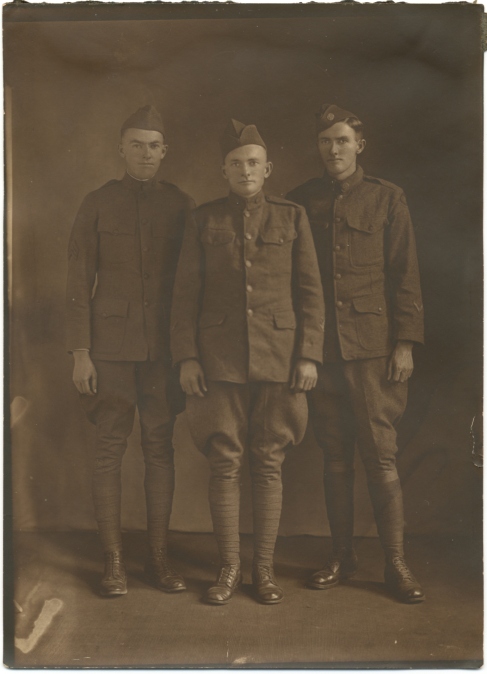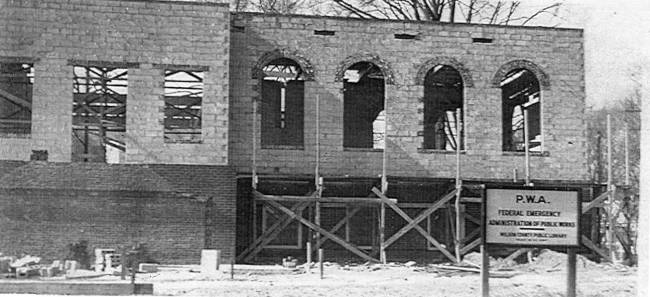The NY Times has a new series on archiving your family history. Readers sent in their questions to Bertram Lyons, the archivist for the American Folklife Center of the Library of Congress. The first part of the series deals with preserving family audio. The topics included in this part are 1. Converting analogue to digital- he tells you how to find the right vendor. 2. Preserving fragile home records-how to handle them and where to send them for preservation. 3. Converting cassettes and LPs to digital- how to do it yourself with available products for the consumer. 4. The Lifespan of CDs and DVDs- nothing lasts forever, not even your Rick Astley CDs. Go to the NY TImes to read more. Next week, preserving film and photos. Can’t wait.
Monthly Archives: May 2013
Unique Dutch Gravestone Unites Spouses
This is one of the most interesting gravestones that I have seen. The wife was a woman from the nobility and Catholic, the husband was a Colonel in the Dutch Calvary but also a commoner and Protestant. The town cemetery in Roermont didn’t let Catholics and Protestants be buried in the same area. This posed a problem for the couple when they went to their rewards. The wife died last and she eschewed her family vault to be buried as close to her husband as possible and united in a symbol that connects the two across the wall. They are probably the coolest 19th century Dutch people that I have seen.
Source Laughing Squid, Varik
WWI Brothers
Record Detective
Record Detective from My Heritage sounds intriguing. It can take one record and find many other records that are related. This is what they say:
Record Detective is a new game-changing technology from MyHeritage, which will provide you with many records, other records and tree profiles about the very same people. It is highly accurate and will not waste your time with false positives. It is original and there is nothing quite like it in the industry. It doesn’t replace manual research, but it can often help you save time and find relevant information you may never have found on your own. A summary of any record may be viewed for free.
Of course it is all subscription based. Although is says that summary is free it isn’t much of a summary from what I’ve found, but it may be useful for people who want to spend the money.
Gloria Lucas’ Slave Records of Edgefield County
Perhaps one of the most comprehensive book on the documents of slavery, Slave Records of Edgefield County, contains
access to ledgers of estates, wills, inventories, appraisals, deed transfers, sheriff sales and other files that contain about 29,000 listings and more than 58,000 slave names. Many of the records provide gender, age, physical description, occupation and family relationships. (Tricia Glenn Edgefield County Archivist).
Gloria Lucas pulled back a huge curtain on the lives of 19th century slaves lives in South Carolina and Georgia. African American genealogy can be a daunting task looking for useful records from the Antebellum South but this work will make the task a little easier. Unfortunately Ms. Lucas died last month at 84.
Source Eastman’s, The Augusta Chronicle
Genealogy News
Free access to military records at Ancestry.com this weekend in honor of Memorial Day.
Also, this is exciting if you have any Irish relations, Irishgenealogy.ie has now added birth records back to 1845.
Gaelic Charm from Moore/ Cumberland County, NC
I was perusing the North Carolina Treasures page of the State Archives of North Carolina and found a unique document written by a man name Dougald McFarland circa 1750 in Moore/ Cumberland County. The charm is written primarily in Gaelic and calls upon Callum Cille to protect the bearer against harm. Callum Cille was the Gaelic name for St. Columba, the converter of the Picts to Christianity in the 500’s AD. There were many Scots Highlanders who settled in this region in the 1700’s and one of them was an ancestor of mine named Malcolm MacAlpin(e). This manuscript is an interesting relic of their distinctive culture.
The Wilson County Public Library Under construction
The Wilson County Library under construction in the late 1930’s with a Public Works Administration (PWA) sign out in front. The PWA planned large public works projects and then paid private companies to build them. Not to be confused with the WPA or Works Progress Administration who hired their own labor to do smaller projects.
Genetic Genealogy Presentation
Next Tuesday at 7 I will be giving a presentation to the Wilson County Genealogical Society on genetic genealogy through Y-DNA. The presentation will start with the problems I ran into when researching my own family and how I may or may not have overcome (you won’t know until the end of the presentation!) brick walls through the correlation of patrilineal surnames and the Y chromosome. It will also be a an overview of the formation and structure of (mostly) British surnames and a description of the Y chromosome and Y DNA haplogroups. Although the talk is European centric because of my audience (and my research) and of the enormous amount of sampling data and research that has been done in Europe, but there will be some surprises and I welcome any questions. It should be fun and informative but not too brain overloading.
Edisto Island, South Carolina Slave Cabin Donated to the Smithsonian
Two 19th century slave cabins still exist a the Point of Pines Plantation on Edisto Island, South Carolina. One of them is being painstakingly dismantled and sent to the Smithsonian Museum to be a centerpiece of their new museum, the National Museum of African American History and Culture, which is slated to open in 2015. Because the Union troops seized many of the South Carolina sea islands not long after the Civil War began in 1861, the enslaved people at Point of Pines Plantation were some of the first in the South to declare themselves free. There is a great article on this slave cabin over at the History Blog.
Other slave cabins that I know that still exist are at Bratton Plantation In York county, SC (these are brick and hopefully are not reconstructions, they look old though) and at the Bellamy Mansion in Wilmington, NC (I’ve actually done archaeological work on these). Their website has a video about their restoration.
addendum after further reading of their website I found that the Bratton Plantation slave cabins are reconstructions. They are done very well in my opinion, but not the originals.










